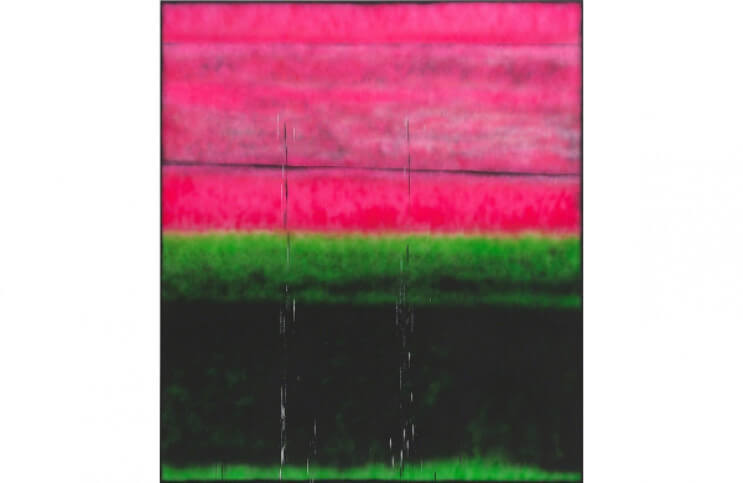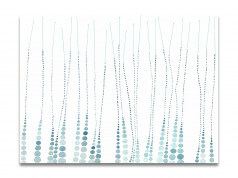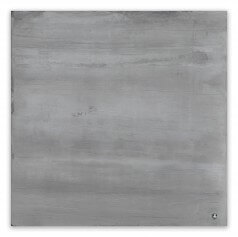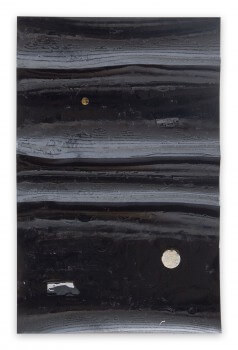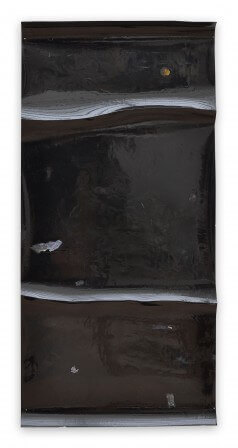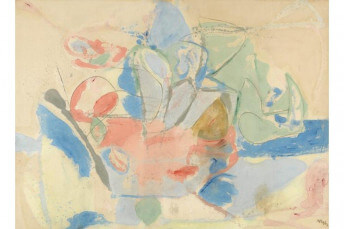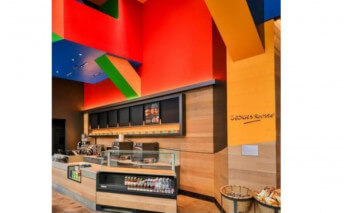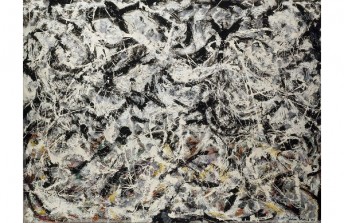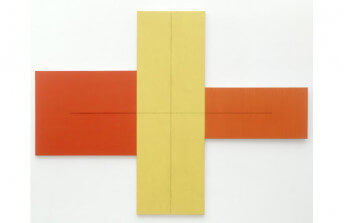Finding the Color-Field Heritage in Sterling Ruby Paintings
Oct 26, 2016
The multiple simultaneous realities of the city speak in visual bursts on its innumerable surfaces. Glitzy, rotting, rusting, ancient, new, some marked for destruction, all intermingling, building an amorphous vision of modern life. This is the urban aesthetic, and also the aesthetic of the vast, diversified oeuvre of Sterling Ruby. In his 90,000+-square foot studio in Los Angeles, this multidisciplinary artist engages in a prolific, multifarious artistic process, creating a fantastic range of aesthetic phenomena. His work includes large-scale public sculptures, miniature ceramics, cacophonic installations, cardboard assemblages, kinetic mobiles, works on paper and sculptures made from everything from cast metal to urethane to fabric. And along with all these other manifestations of his idiosyncratic vision, Ruby has created a large body of abstract paintings. The title of each of his paintings begins with the letters SP, for spray paint. Their aesthetic evokes the abstract color field paintings of the Mid-20th Century, but they are distinctly contemporary, inspired by the textured, layered, endlessly metamorphosing imagery left behind by graffiti artists on the surfaces of the city.
A Modern Mythos
A color field painting is exactly what it sounds like: a painting of unbroken fields of color. Elements of pattern, form or composition may also exist in it, but they are not the subjects of the painting. Color is the subject, if there is any subject at all. Mark Rothko and Clyfford Still are the two artists most commonly credited with initiating this type of painting. Their aesthetics were not all that similar, but their intellectual objective was. They were seeking an abstract style that would allow them to communicate a modern, subconscious mythos, through which a viewer may be able to experience a transcendent state of being.
The works of the color field painters, which began appearing in the 1940s, were unlike any other abstract paintings Modernism had yet produced. About them, Barnett Newman, another painter associated with color field painting, said, “We are creating images whose reality is self-evident and which are devoid of the props and crutches that evoke associations with outmoded images, both sublime and beautiful.” Yet despite their newness, and their neglect of existing associations, if we open our eyes to it we can see that the unique aesthetic language they pioneered does have its equivalent in the contemporary representational world.
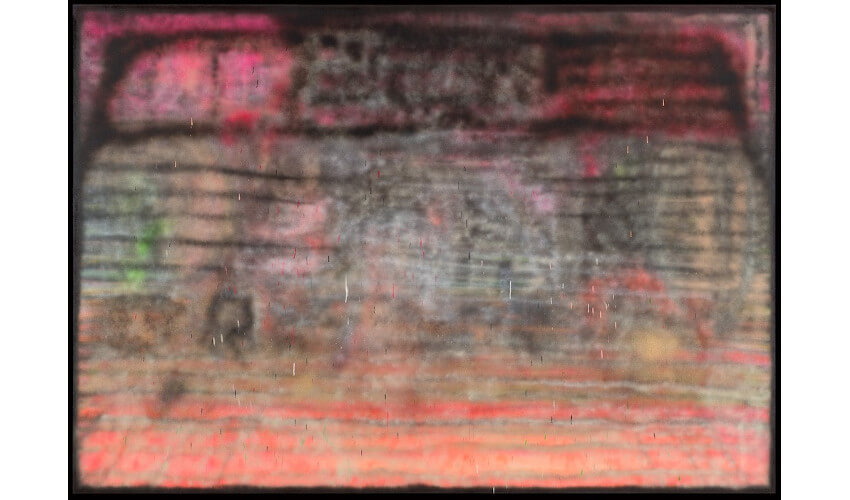 Sterling Ruby - SP22, Spray paint on canvas, 2008. © Sterling Ruby
Sterling Ruby - SP22, Spray paint on canvas, 2008. © Sterling Ruby
A Bigger Experience
The color field painters were like mediums through which the post-industrial visual mythos was first revealed to our eyes. It introduced itself as art, so in the relative safety of our unique relationship with that realm we could interact with it as something separate from representational reality. It helped us connect with something profound, and opened a door to a bigger experience. Now that we realize that the visual echoes of the color field aesthetic are all around us in the physical world, in the visual planes of the earth, in the sky, and in the architecture, what affect does that have on our understanding of the myth?
Are the unbroken fields of color we see adorning loading dock doors, factory floors, aging furniture, decaying billboards and rusting machines also inviting us toward transcendence? Is this part of our modern myth that we have learned through art the way to see the eternal in the everyday? Perhaps this is what Arshile Gorky meant when he suggested in the 1940s that we would one day no longer need artists, because we would all make our own art simply by recognizing it in the world around us. But if that is true, and we do not need color field paintings because they are already all around us in the natural world, why are the paintings of Sterling Ruby so compelling?
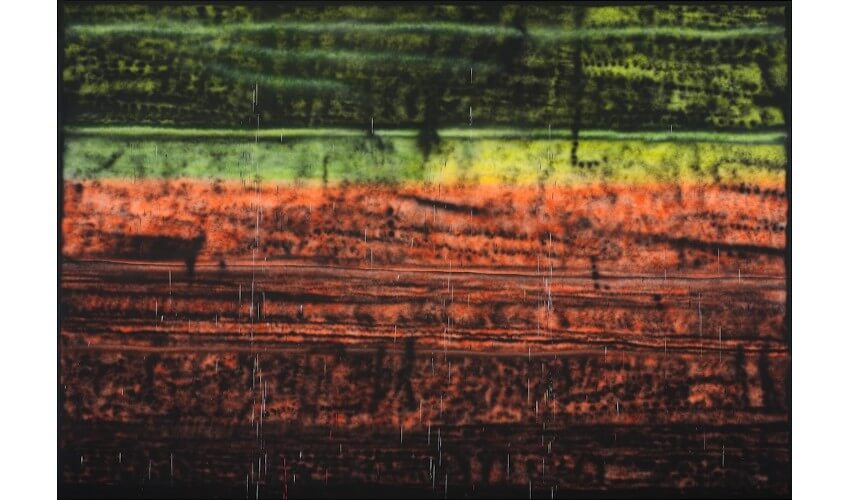 Sterling Ruby - SP173, Spray paint on canvas, 2011. © Sterling Ruby
Sterling Ruby - SP173, Spray paint on canvas, 2011. © Sterling Ruby
The New Color Fields
What Sterling Ruby accomplishes in his paintings is something different than what the color field painters of the 1940s and 50s intended. His works share an aesthetic lineage with their work, but they do not share an intellectual link. We could maybe call what Sterling Ruby does Neo-Color Field Painting. The difference is in his process, which does not begin internally with a subconscious desire to connect with the unexpressed myth of his era. Rather he begins from the point of view of the observer. He understands the visual situation of the contemporary urban environment. He connects directly with its multitude of surfaces and melding colors and reflects them back to us in luminous, exalted fashion.
The paintings Ruby makes are not objective; but they are evocative of objective reality. They hint at something recognizable. They communicate a modern mythos, as did the color field paintings of Rothko and Still, but Ruby did not invent the myth. He retells it brilliantly, appropriating a beloved, familiar visual narrative and rephrasing it in a sublimely enjoyable way. They are abstract. What else could we call paintings when the idea of them is separate from their existence as aesthetic phenomena? Yet they are representational in that they show us our world, as experienced through, translated by, and elaborated upon by Ruby.
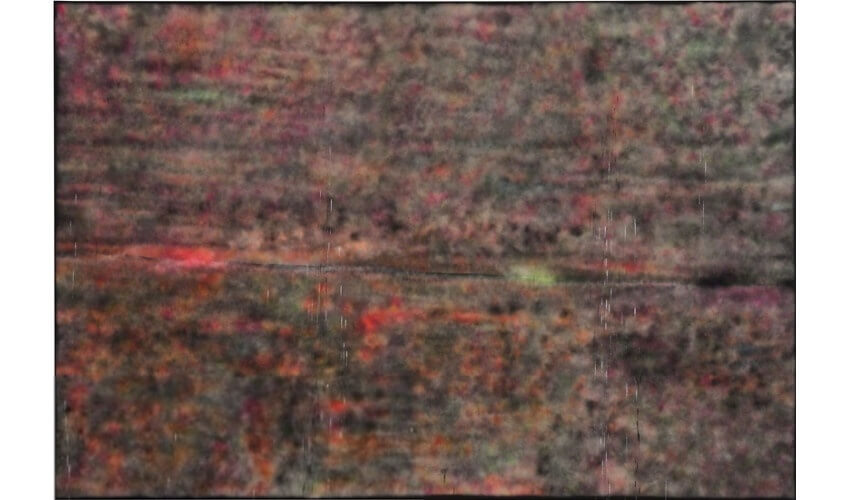 Sterling Ruby - SP249, Spray paint on canvas, 2013. © Sterling Ruby
Sterling Ruby - SP249, Spray paint on canvas, 2013. © Sterling Ruby
Neo-Gesturalism
A striking addition Sterling Ruby brings to the new color field painting tradition is the reintroduction of the importance of the physical gesture. This is expressed in his work through the medium of spray paint. It may not be a universally relatable gesture, but anyone who has ever held a can of spray paint and used it to apply paint to a surface recognizes the inherent uniqueness of the gestures involved. They are specific to the medium.
To those who have never used a spray can, the markings in a Sterling Ruby painting may at first appear like they could have been made with a stain technique, or airbrush, or gouache, or watercolor. But the physical, gestural specificity of the medium is obvious to the specific group of viewers who have themselves made those gestures. Something about a medium-specific expression of gestural abstraction so distinctive that it is evident only to those who participate in the culture of the work is sublimely expressive of the 21st Century.
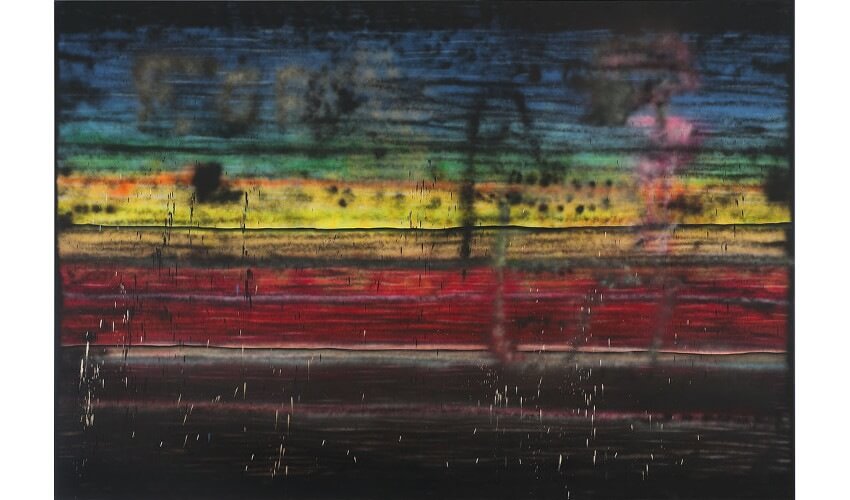 Sterling Ruby - SP102, Spray paint on canvas, 2010. © Sterling Ruby
Sterling Ruby - SP102, Spray paint on canvas, 2010. © Sterling Ruby
Process and Transformation
Another peculiarly contemporary gesture was made by Ruby in 2012, when he partnered with Belgian fashion designer Raf Simons to create a line of clothes based on his works. Aside from whatever connotations this partnership might evoke to those more cynical among us, it also can, and positively should be seen as the fulfillment of the original vision of the color field pioneers.
Mark Rothko said, “A picture lives by companionship, expanding and quickening in the eyes of the sensitive observer. It dies by the same token. It is therefore risky to send it out into the world.” And Clyfford Still said, “I never wanted color to be color. I never wanted texture to be texture, or images to become shapes. I wanted them all to fuse together into a living spirit.” What better manifestation of companionship, and of the bold and brave risk of sending art out into the world than by incorporating it into clothing? What better way to fuse art into a living spirit than to literally encompass that living spirit within it?
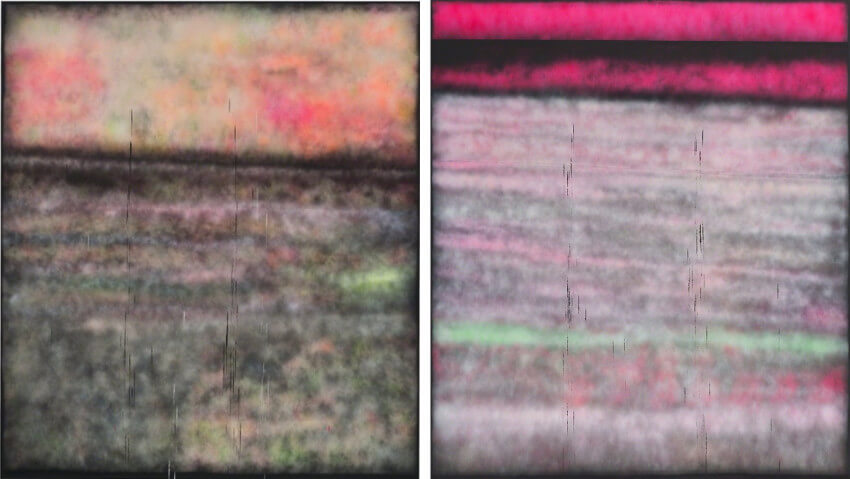 Sterling Ruby - SP266, 2013 (Left) / Sterling Ruby - SP299, 2014 (Right). © Sterling Ruby
Sterling Ruby - SP266, 2013 (Left) / Sterling Ruby - SP299, 2014 (Right). © Sterling Ruby
Featured image: Sterling Ruby - SP301, Spray paint on synthetic canvas, 2014
All images used for illustrative purposes only
By Phillip Barcio
Featured Artists
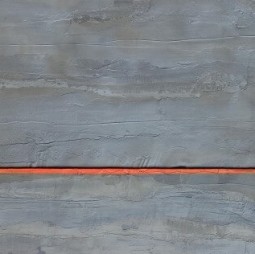
Pierre Auville
1968
(France)French
Pierre Muckensturm
1970
(France)French
Harald Kröner
1962
(Germany)German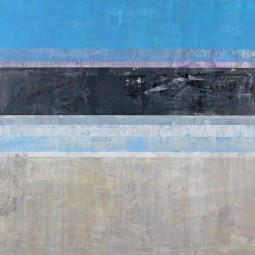
Clay Johnson
1963
(USA)American
